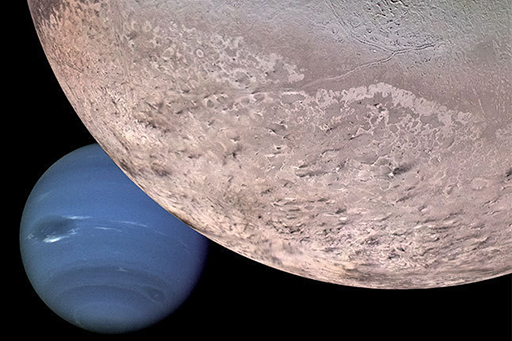3.3 Triton – a moon with a difference

Neptune’s largest moon Triton is unique in that it is the only large moon in the Solar System to have a retrograde orbit (orbiting in the opposite direction to the rotation of the planet). A retrograde orbit is regarded as sufficient proof that an object has been captured rather than formed from the same material as the primary. Other moons have been observed with retrograde orbits, but these are much smaller and further away from their primary. Discovered in 1846 by English astronomer William Lassell, Triton is thought to have been captured by Neptune from elsewhere in the Solar System. Where could this be? Well, look no further than Pluto. Triton has a very similar composition to Pluto, suggesting that they shared a common origin in the Kuiper belt. Triton is also one of the few moons in the Solar System known to be geologically active.
